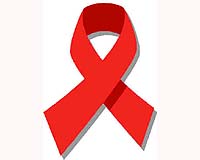| . |  |
. |
Geneva (AFP) Nov 6, 2009 The World Health Organisation on Friday called for closer monitoring of farm workers and animals for influenza A viruses, following recent cases in a wider range of creatures than pigs. Although the WHO stressed that the cases were isolated and had no impact on the way the A(H1N1) swine flu pandemic evolved in humans, the UN health agency said recent findings may indicate broader potential for flu viruses to mix and mutate. Pigs have traditionally acted as virtual mixing vessels for different flu viruses, allowing them to mutate into new forms that could be passed to humans. "These recent findings further suggest that influenza A viruses in animals and humans increasingly behave like a pool of genes circulating among multiple hosts, and that the potential exists for novel influenza viruses to be generated in animals other than swine," the WHO said in a briefing note. "This situation reinforces the need for close monitoring and close collaboration between public health and veterinary authorities," it added. "When influenza infections are detected in farmed animals, WHO recommends monitoring of farm workers for signs of respiratory illness, and testing for H1N1 infection should such signs appear." Currently, countries are only required to notify avian influenza cases in birds to international authorities, although some nations have tougher domestic rules that apply to other animals like pigs. But the WHO said that since the rulebook also required reporting of "any emerging disease" in animals to the World Animal Health Organisation (OIE), "this would include infections with the pandemic H1N1 virus or other novel influenza viruses." The WHO emphasised that laboratory tests had not detected signs that the A(H1N1) pandemic virus had mutated to a more virulent form. "These isolated events have had no impact on the dynamics of the pandemic, which is spreading readily via human-to-human transmission," it added. The recently detected cases involving animals have included swine flu appearing in pigs. "As human infections become increasingly widespread, transmission of the virus from humans to swine is likely to occur with greater frequency," the WHO noted. Other A(H1N1) infections have been reported in turkeys in Chile and Canada and in pets such as a cat in the United States, and the WHO also highlighted the progress of highly virulent H5N1 bird flu in recent years. Another case raised by the global health watchdog involved a "novel H3N2 influenza virus" found recently in mink on several mink farms in Denmark. That virus was formed by a combination of human and swine genes that had not been identified previously in circulating influenza viruses, according to the WHO. Testing of farm workers there detected no spread to humans. "However, the incident demonstrates the constantly evolving ecology of influenza viruses, the potential for surprising changes, and the need for constant vigilance, also in animals," the Geneva-based health agency added. An official told AFP this week that the WHO is focusing on dealing with the ongoing pandemic and is leaving it up to other researchers or insitutions to track down the source of the A(H1N1) virus first uncovered in Mexico and the United States in April. On Wednesday, the Paris-based OIE had insisted that there was no evidence that animals had played "any particular role in the epidemiology or the spread" of the pandemic virus. "It does not come as a surprise that notifications of infection in new animals species are received; on the contrary it demonstrates animal disease surveillance is efficient and functioning to the benefit of all," OIE Director General Bernard Vallat said in a statement. Share This Article With Planet Earth
Related Links Epidemics on Earth - Bird Flu, HIV/AIDS, Ebola
 South Africa tries to enlist men in AIDS battle
South Africa tries to enlist men in AIDS battleJohannesburg (AFP) Nov 6, 2009 "There is a new man in South Africa," proclaims a new ad splashed across South African media, aiming to transform ideas about sexuality and to enlist the nation's men in the fight against AIDS. This new South African man's "self worth is not determined by the number of women he can have." He "makes no excuse for unprotected sex" and "respects his woman", the ad reads. The image of a hard ... read more |
|
| The content herein, unless otherwise known to be public domain, are Copyright 1995-2009 - SpaceDaily. AFP and UPI Wire Stories are copyright Agence France-Presse and United Press International. ESA Portal Reports are copyright European Space Agency. All NASA sourced material is public domain. Additional copyrights may apply in whole or part to other bona fide parties. Advertising does not imply endorsement,agreement or approval of any opinions, statements or information provided by SpaceDaily on any Web page published or hosted by SpaceDaily. Privacy Statement |